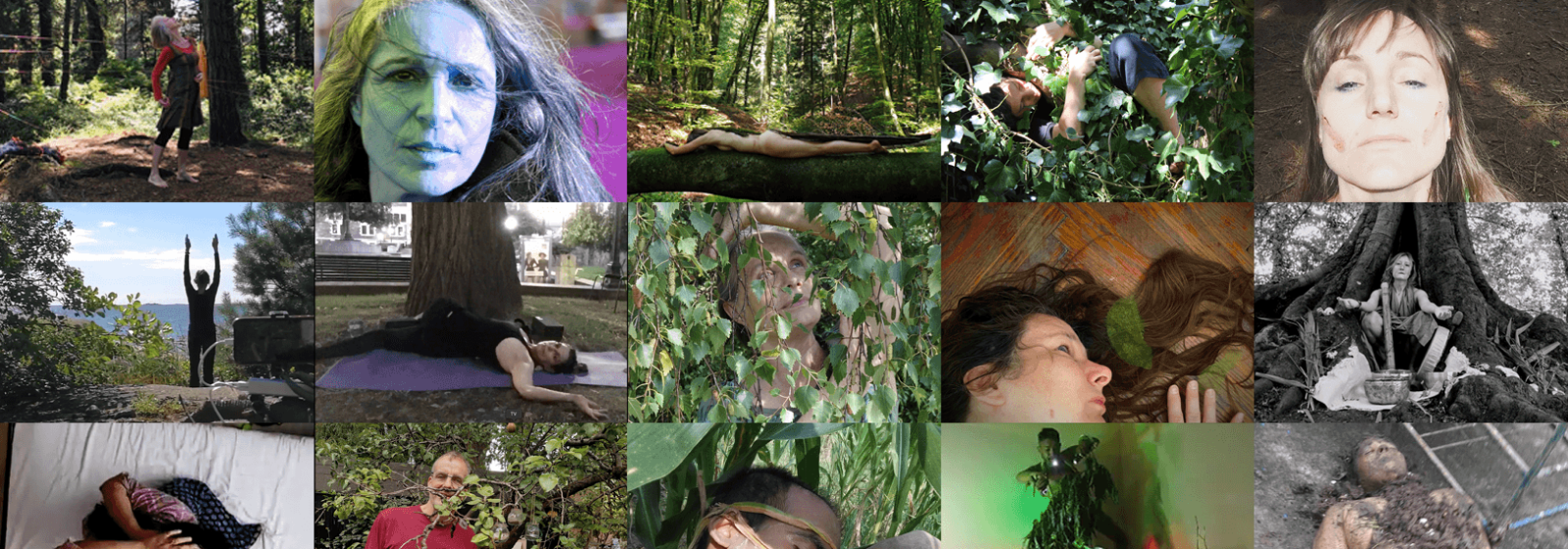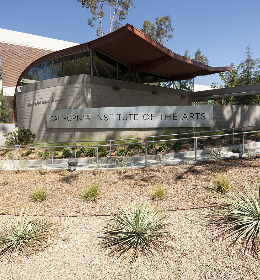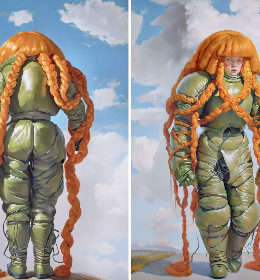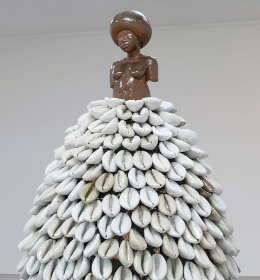For myself, I initially heard about the performance through Facebook as an open call. I was skeptical as the Facebook page for the project did not have a website or explain who the organizers were, although I really liked the idea as it fit well with the research I have been doing as an artist over the last few years. I sent an email explaining my reservations and that I really liked the project and would like to apply. The organizers responded and shared a bit about their concepts and identities. Jatun Risba, an artist from Slovenia, responded, “Being a grassroots project that has no institutional or financial support, the ‘right for opacity’ (see Glissant ) becomes a self-empowering tool to appreciate and respect diversity and difference (of the commonly unacknowledged) as enriching values.”

Annette Arlander performing With a Pine on Harakka Shore, Harakka Island, Helsinki, Finland - photo credit: Marika Maijala
This response, referring to Édouard Glissant’s writings on opacity led me down multiple paths of thought, considering how we approach transparency, opacity, and what these aspects mean for the observer and the participant. I decided I definitely wanted to be involved.

Jatun Risba performing Be-coming Tree, photo credit: Maja Usico
Birthed from an artwork that Risba had previously created, Be-coming Tree, the Be-coming Tree collective performance was initially a collaboration organized by Jatun Risba with artist and writer Danielle Imara and O. Pen B Dance Movement Therapy Clinician and Live Art Artist. Through the open call it was expanded to a forest of participants from and/or living in different countries, myself included:
O. Pen Be (UK), Danielle Imara (UK), Jatun Risba (SLO), Surya Tüchler (GER), Emma Cole (UK), Annette Arlander (FIN), Yolande Brener (USA), Caroline Frizell (UK), Anne Murray (HUN), Izabela Waszak (SCT), Sumedha Bhattacharyya (IND) , Phil Barton (UK), Nitesh Kushwaha (IND), Satadru Sovan (IND), Chaturi Nissansala (LK), Lucy Stockton-Smith (UK), Prashant Jha (IND), Dinesh Solanki (IND), Agathe Gizard (GER), Pierce Starre (UK).
This event was an expressive immersion into the world of the tree from multiple points on the globe and performed in both interior and exterior spaces. It also delved philosophically into de-emphasizing gender and self and moving towards broader relationships with the natural world. I was particularly interested in Risba’s email response to explain these pronoun concepts, “*ki (sing.) and kin (poss., plur.) are postcolonial, postgender, postspecies pronouns which form the building blocks of an English grounded in terrestrial kinship.”. You can download her essay relating to this topic of ki and kin entitled, KI(N) AS EXODUS. Subverting the Art and Science Canon.
In an era when pronouns are a crucial step in a process of reimagining human interaction, these two, ki and kin, become one step further in the process, imagining the expansive connectivity we can embrace and support as artists and beings beyond notions of self, other, and towards a connected whole, a body that is our beloved Earth.
For myself, I was not in the habit of performing, but felt an excitement and vitality in connecting with others through the net formed by this unique project. Tuning into ZOOM, briefly seeing the other participants and getting started as microphones were silenced and positions taken, it conveyed the sense of inspiration that one feels only in the theater as the lights dim and the curtains open. I could hear some of the sounds of the forest where Risba was, in Slovenia, and some music from another artist as well, which had an influence on my movement, even though I tried to overcome the music and listen for the forest sounds. Touching the floor of my living/studio space, I imagined the live tree that once was these planks of well-worn wood that I had walked upon for months. Through the screen of my phone, I saw other performers featured for exclusive moments and switched to the next artist in places far and distant, unknown to me. I felt a connection that was unexpected when it finished after about one hour of performing. I had become a part of a forest, roots connected, intentions joined, resources expanded and time shared in unified purpose. I did not get to see everything at once as some viewers could choose the option of a multiple view, so for me, I saw the forest for the trees, as the old expression goes, while inside my mind and body, I felt the forest, as a collective mind experience, brief, but telling. Perhaps, I thought, this pandemic has forced us to reintroduce ourselves to collective experience, as bees, somehow knowing without explaining.
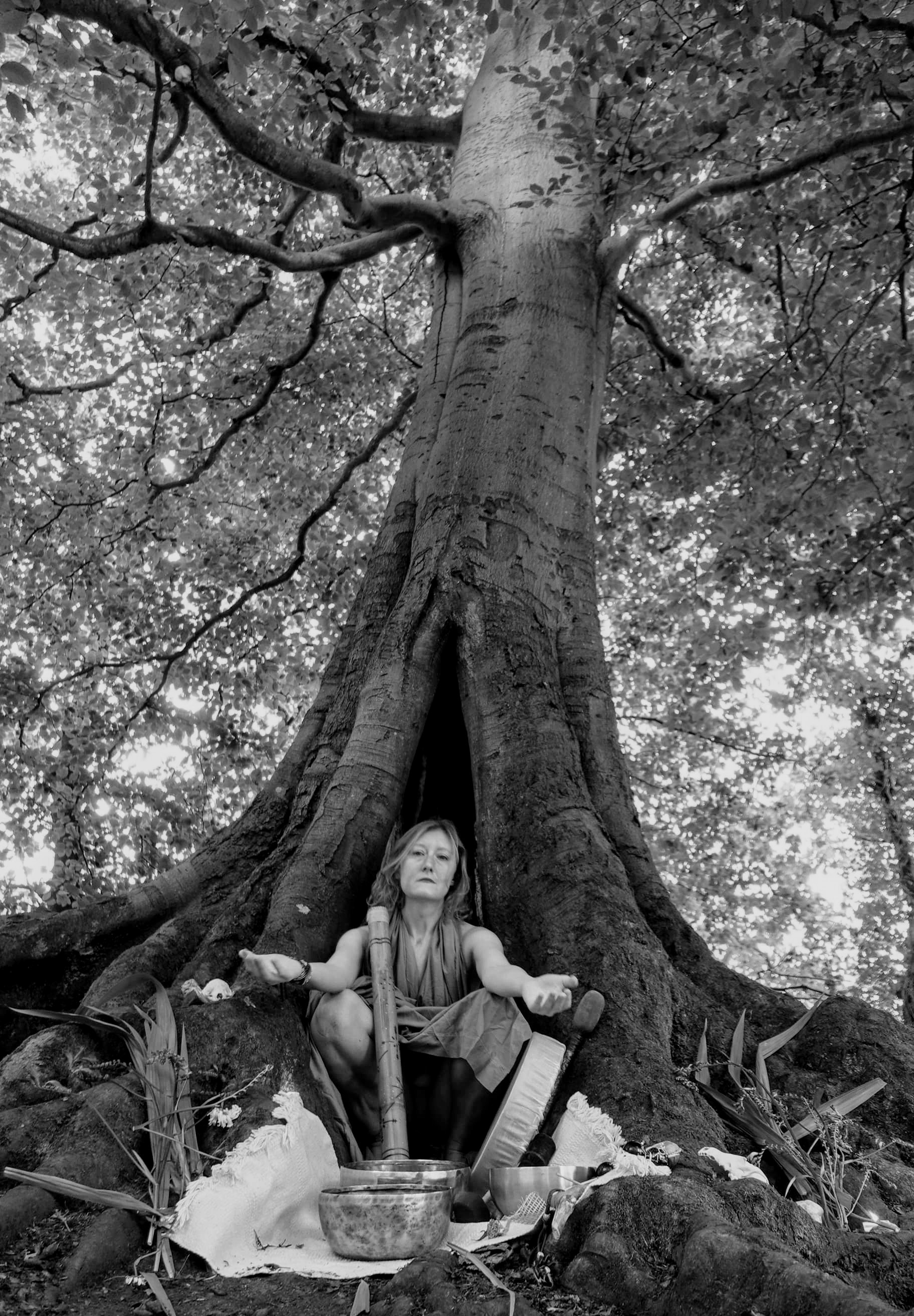
Izabela Waszak performing If trees could speak, Edinburgh, photo credit: Magda Milek
Risba delved into the origins of the project in an email expressed in the third person, “In 2012 the artist transformed a diagnosis of Multiple Sclerosis into an opportunity to engage in the 'arts of the self' through a practice of uncovering, recovering, and nurturing health on every level: physical, mental, social and spiritual. It’s been both a tremendous challenge and an absolute success, which was initiated by forming a life-long alliance with practices of trance on one hand, and of reciprocity with non-human beings on the other. The urge to grow empathy with more-than-human forms of life and a drive for braving ecstatic states of consciousness which question the supremacy of logocentrism, emerged spontaneously during the process of empowering and re-educating the self.”
Indeed Risba’s attention to health and well-being seems timely given the second wave of the pandemic which is spreading across the planet and the augmented need for us to all work together to survive it. “There are no ugly trees in a forest,” writes Risba,” Every tree is the result of specific genealogic and environmental factors in which a member of the species exists. The same applies for humans. However, such worldview is unpopular and underrepresented in neoliberal societies which are highly individualistic, competitive and profit-oriented.” Risba highlights here the need to think on a broader scale, to achieve a collectivity of intention and purpose.
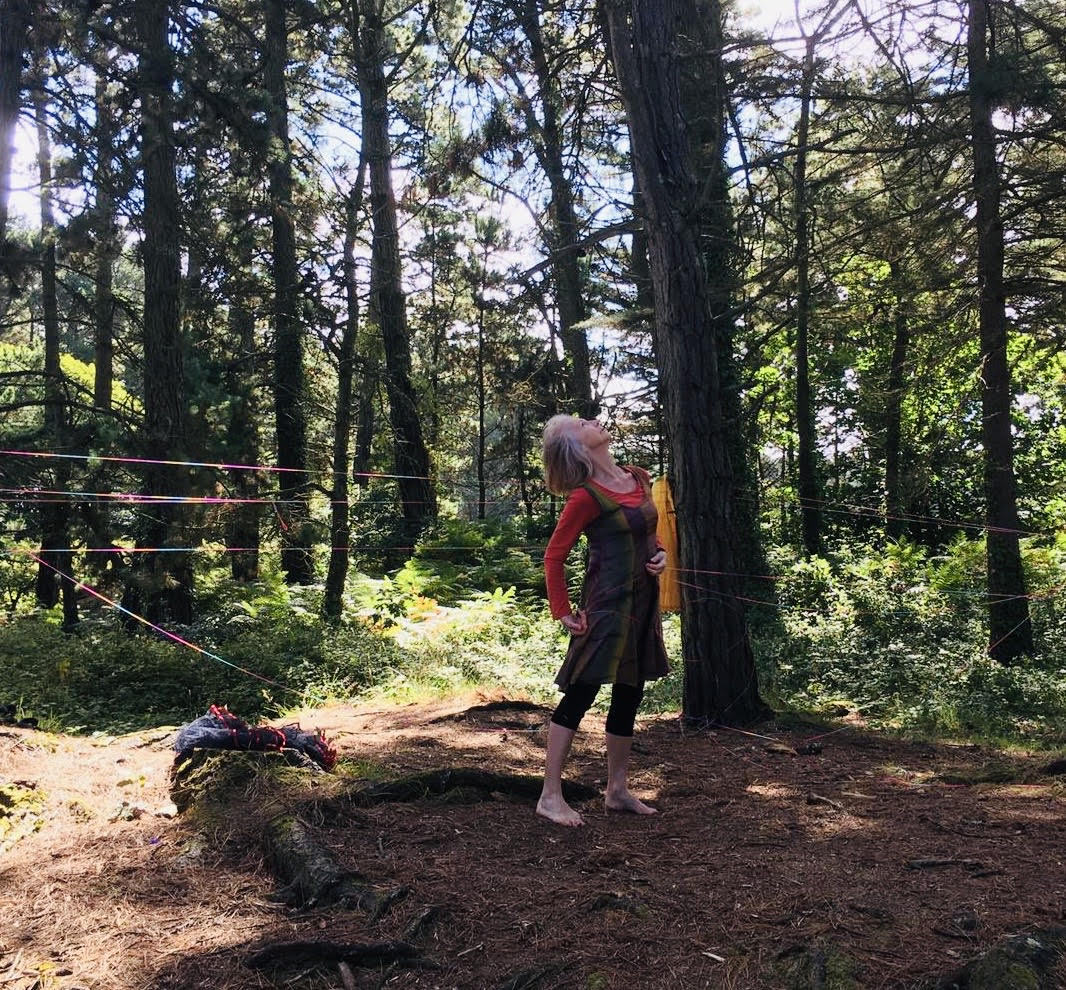
O. Pen Be performing Root Tracing, Cornwall, UK photo credit: Crispin Best
I asked Risba about the initial collaboration and once again she answers in the third person, “From May on, the main “partner in art crime” in the Be-coming Tree initiative has been London-based artist and writer Danielle Imara. The two have been collaborating since the launch of the project "Kin Letters" in April 2020.” The project grew and another artist was invited into the circle of kinship, Risba explains, “Later on, Imara invited a third artist, O. Pen Be, to join the team. Lastly, a collaboration with artist Satadru Sovan and the Hexxy Duxxy Box, a performance platform based in India, was undertaken to further expand the scale and level of transcultural kinship and cross-fertilization. The first collective Be-coming Tree event involved 20 artists in different time zones from 10 different countries. It was thrilling to give rise to such richness and diversity of artistry.”

Screenshot from the performance, photo credit: Algerian artist Mouna Bennamani who watched the ZOOM from Algiers
Chris Grady who runs CGO Institute for Creative Producing, was the ZJ for the event, running the technology and switching the screen view for each artist as they performed. He shared his reaction to the event, “It was an honor to be invited to create a Zoom journey through each artist’s individual artistry around the natural world. I was in the enviable position of being able to see all of the work in a tapestry. From surreal, through family art, to dance and meditation it was at times breathtaking and always powerful to witness. As Zoom develops as a tool for creative witnessing I sense that the experience for the observer will get deeper and richer every time artists consider creating further Be-coming Tree events. I hope to be able to be in the audience, or once again undertaking a more active Zoom journey.”
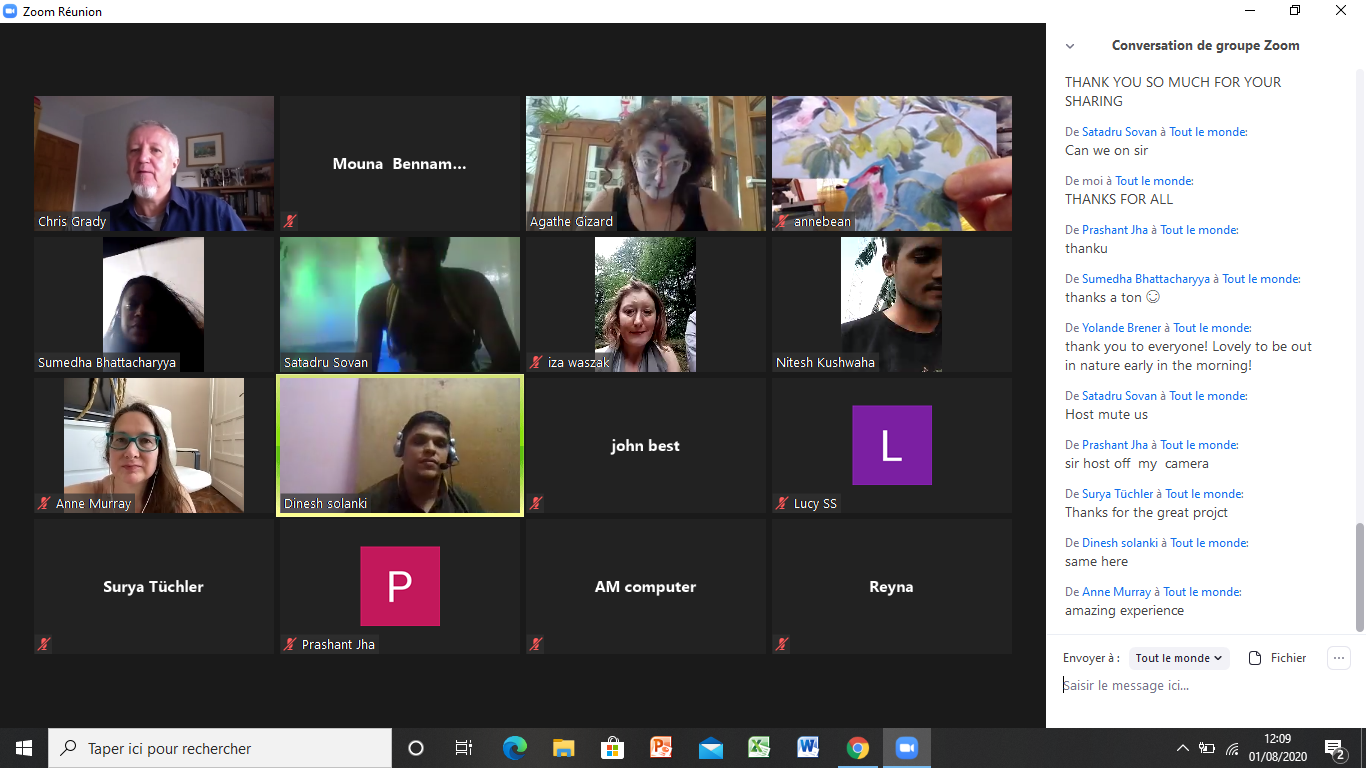
Screenshot during the closing comments with ZJ Chris Grady at top left, photo credit: Algerian artist Mouna Bennamani watching from Algiers

Prashant Jha performing Cultural tree Ritual, Modinagar, India, photo credit: Nishant Jha
Each performance brought intense links to nature both individually and in the sense of the collected network of a rooted forest. For some of the artists this meant looking at Celtic roots, local forests, breathing with the trees, while others held a tree close in an act of memory accession, sought camouflage amongst the trees, enacted yoga poses underneath the branches, explored concepts of desire, performed both elegy and celebration of trees felled and still standing, and explored the spiritual and physical connection by bathing and touching the tree. Artist Agathe Gizard read from the book, “The Tree” by Grey Owl (in French), which “calls for the rebirth of Indigenous culture and for their rights for the land. A strong message of hope.”(expressed by Gizard in the online description.) Pierce Starre’s work focused on the importance of trees in reducing our carbon footprint, and my own work, How to Explain e-Motion to a Dead Tree, references Joseph Beuys' performance, How to Explain Pictures to a Dead Hare, and questions motion, emotion, and their roles in our expanding digital existence connecting the tree outside my window and the wood floor on the inside.

Self-Portrait, Anne Murray performing How to Explain e-Motion to a Dead Tree
If you missed the first iteration, don’t despair, there is another online ZOOM joint performance happening on Saturday, October 31st, at 12(noon)CEST. You can follow the Be-coming Tree Facebook page to keep up to date on the open call and the ZOOM event links.
I think you will enjoy this virtual time in the forest, as we head into another series of global lockdowns.
Anne Murray




